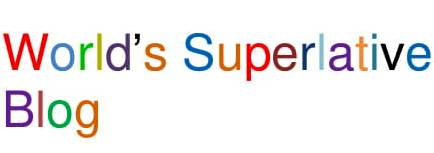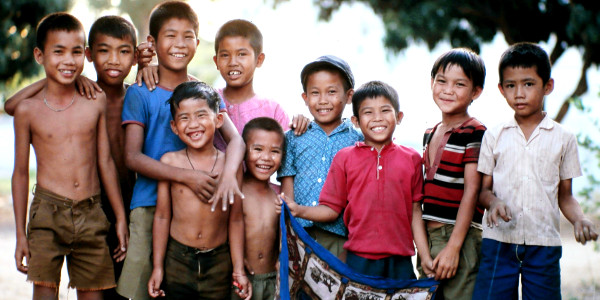Different Cultures, Different Truths
“I saw Khun Ken eating like an animal!” Sukhorn said with a shy, self-conscious smile. Sukhorn was my lab tech at the Suan Dok hospital in Chiang Mai, Thailand, where I was spending a year researching the effects of pediatric malnutrition. It was Monday morning, and I’d just arrived at work. Her statement, needless to say, was puzzling.
“Sukhorn, what do you mean?” She grinned, and demurely looked down. Finally she said, “Khun Ken bought some curry on the street this weekend. And he was walking along the sidewalk eating it. Just like an animal!” I still didn’t get it, and she didn’t seem to want to talk further. So I just shrugged, and attended to my limulus assays.
That afternoon I told Panja Kulapongs, a wonderful pediatric hematologist/oncologist who did most of his training in the US, about this interchange. He started laughing, then explained that in Thai culture the proper thing to do after buying street food is to eat it while squatting down on the sidewalk near the vendor. Eating while walking is what animals do—very tacky, and impolite. I was abashed to realize I was seen doing something so crude, especially since as one of the few westerners in Chiang Mai at the time I really stood out.
Even decades later, this has stuck with me—to this day I’m self-conscious about eating an ice cream cone while walking down the street. And when I see people strolling along the sidewalk munching on a pizza slice or a hot dog, my initial reaction is to think how uncouth they are.
About halfway through my time in Thailand, our research unit organized what I guess would be called a “fun run” to raise money for a pediatric charity. All suited up and ready to go, Panja approached me. “Please remember, Ken” he said, “don’t run your hardest. You want to leave room for doing better the next time.” Then he added, “And most important, don’t come in first. In fact, try not to distinguish yourself in any way.” I completed the run in safe anonymity, firmly in the middle of the pack.
One of the perks of working at the Anemia and Malnutrition Research Centre was that I was entitled to rent a car at a whopping discount. What I got was a cute little beige VW bug that cost me a dollar a day. (This was truly Dollar Rent-a-Car!). Even my modest vehicle turned heads in Chiang Mai, among the multitude of scooters, samlors and tuk-tuks.
Here in The Far East, driving was somewhat reminiscent of being in The Wild West. At the time, the nearest traffic light was probably in Bangkok, 700 km to the south. Even stop signs were sparse in Chiang Mai, and the few that existed seemed more for decoration than instruction. So when driving among all the bicycles and non-automobile motor vehicles, it was important to be hyperalert.
One day I was heading down the main street, going with the flow at about 20 miles per hour. I ended up behind a samlor, a three-wheeled peddled vehicle that carries a passenger or two for short distances. As I very slowly passed the samlor, it was apparent that the driver was staring at me. We locked eyes. Then, suddenly, he jerked his handlebars so that the side of his samlor smacked into the side of my car. We both pulled over. He quickly checked out both vehicles, then peddled off into the traffic. I saw only a few tiny scratches on the passenger front door, so I shrugged and drove on.
Two days later Boonsri, the chief secretary at the research centre, called me into her office. To my surprise, standing next to her desk was the samlor driver, a piece of paper in hand. Boonsri explained that this was a bill for the repair of his samlor, which he was presenting to me for payment. “What!” I yelled more than asked. I explained to Boonsri that the guy deliberately turned into my car, no question about it. It was clearly his fault. Boonsri smiled patiently. “Khun Ken,” she said, “that’s not the point. The point is that your vehicle is worth more than this man’s. So you are responsible for paying the damage”. “But”, I sputtered, “he intentionally ran into me! It was his fault!” “Fault is not relevant, Khun Ken”, she said. “Your VW is worth more than his samlor. So, you pay. It’s quite simple”. She just smiled and shook her head at my failure to grasp the obvious.
I settled down, and reflected. It was, I guess, sort of like no-fault insurance. Or a social welfare scheme, where the richer look after the poorer, evening things up a bit. Actually, maybe it wasn’t such a bad idea after all.
The Anemia and Malnutrition Research Centre reimbursed the samlor driver. As I unpacked this astounding occurrence, it occurred to me that his samlor probably had some preexisting mechanical problem, and the driver opportunistically bumped into my VW to fund the repair. Well, more power to him; with his samlor in tip top shape, I hoped his business would increase. And maybe someday he would save up enough to buy a VW. And then help another samlor driver pay his bills.
The well-worn mantra says that “we’re all alike under the skin.” And we joyfully sing, “It’s a small world after all; there’s so much that we share.” I suppose that’s all true, and I celebrate my common humanity with every other person on the planet. But, in fact, we’re not all the same, and there certainly are things we don’t share. If I had tried to convince Sukhorn that it was perfectly civilized to eat while walking down the sidewalk, she would have been as apt to agree as I would if she told me it was quite polite to loudly hock up and spit into a bowl during a meal (which, at least when I lived there, the Thais frequently did).
So how do I square the notion that we’re all alike under the skin with the obvious fact that there are profound cultural differences? Actually, I think that keeping these disparate truths in mind can be quite helpful when interacting with others. This is especially true when navigating the profound political and religious differences we encounter daily. We ought to respect everyone, because we do, of course, share a common humanity. But because some views are as ingrained and unshakable as the belief that walking while eating is what only animals do, it’s simply not useful to try to change them. If I mentally superimpose an image of Sukhorn or Panja or Boonsri over the face of the person I’m talking to, maybe I can be less critical of opinions of theirs that I find distasteful. And maybe I’ll feel less compelled to, fruitlessly, try to change them.
So here’s what I hope to remember to do: If I’m engaged with another person with whom I have a serious difference of opinion, rather than thinking of them as a stubborn and ignorant American, perhaps I should think of them as from a vastly different culture. Maybe this will allow me to feel more comfortable in accepting that some of their beliefs, though quite different than mine, are simply part of who they are. And then I can focus on the commonality we do share, like Sukorn’s great sense of humor, Panja’s caring and support, and Boonsri’s patience and tact.




It’s a good idea Ken, but my first reaction is that I’m too angry at fellow Americans in a way I wouldn’t be at Thai people. But I’ll give thinking of them as from another and inexplicable culture a try.
It was a relief to realize that Kuhn Ken was eating like an animal and not eating the animal 🙂
It is indeed not always possible to change an ingrained belief or behavior, and echoing your conclusion, I can choose to be kind to those whom I meet. There is much to be learned from other cultures, including innovative ways to make a profit!
This is really great! My explanation of cultural anthropology (my college major and a formative discipline in my approach to the world) has long been that it serves to “make the strange familiar, and the familiar strange.”
What if someone’s culture, though, dictates dehumanization or discrimination or violence against others? This is the slippery slope of cultural relativism with which we must grapple…
What an interesting subject to take on! Peoples reasons for doing what they do and believing what they believe are often puzzling. I like Emily’s quote and will call it to mind the next time I’m perplexed!
Great observations and insight! I think one of the greatest marks of personal growth and maturity is recognizing and appreciating cultural differences, and being willing to learn from others. Like Soctrates said, “The only true wisdom is in knowing that you know nothing.” Or better yet, true wisdom is in knowing that there is always more to learn while we’re still breathing.
Ken, This is my favorite of all your posts…so far. Once again, you have woven the witty with the profound.
Tres bravissimo!